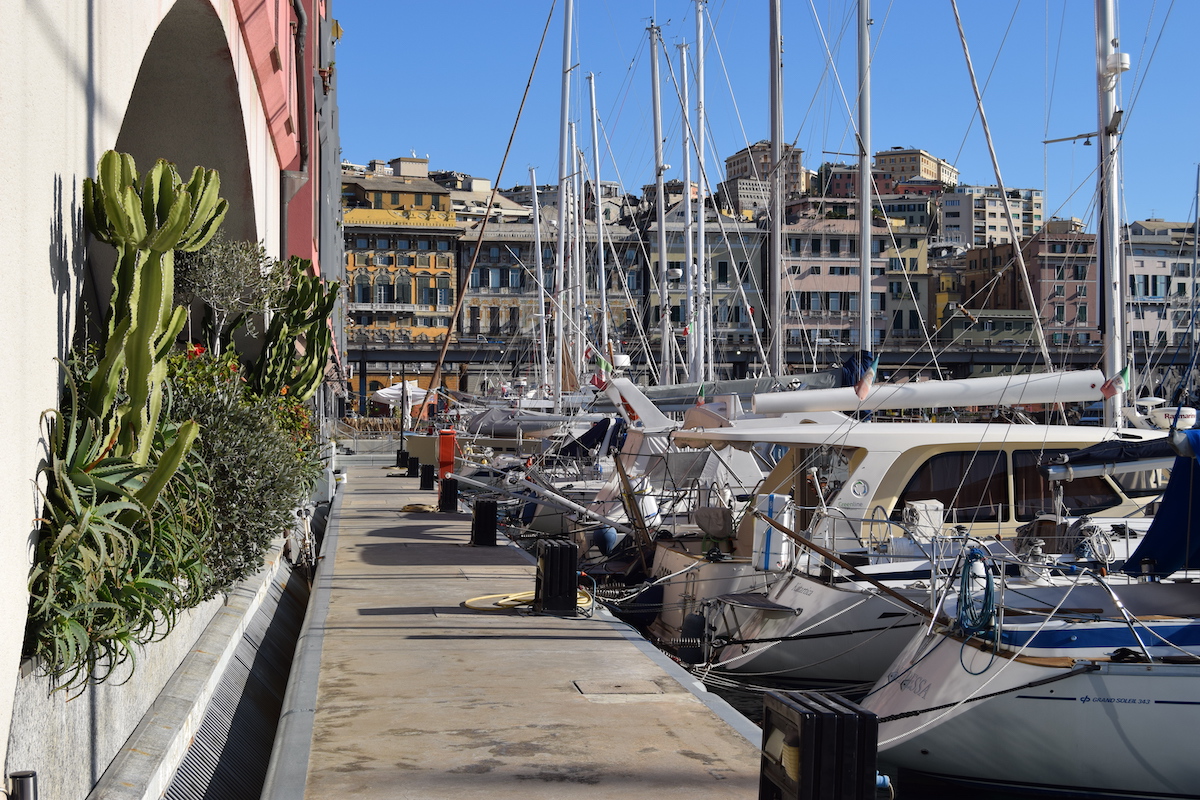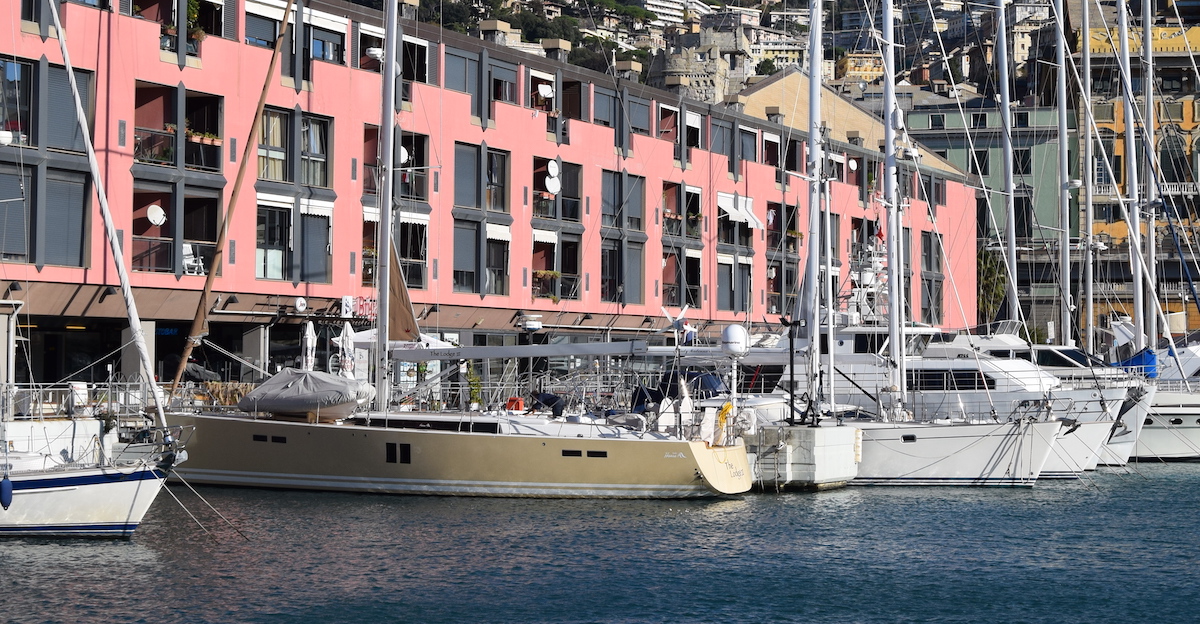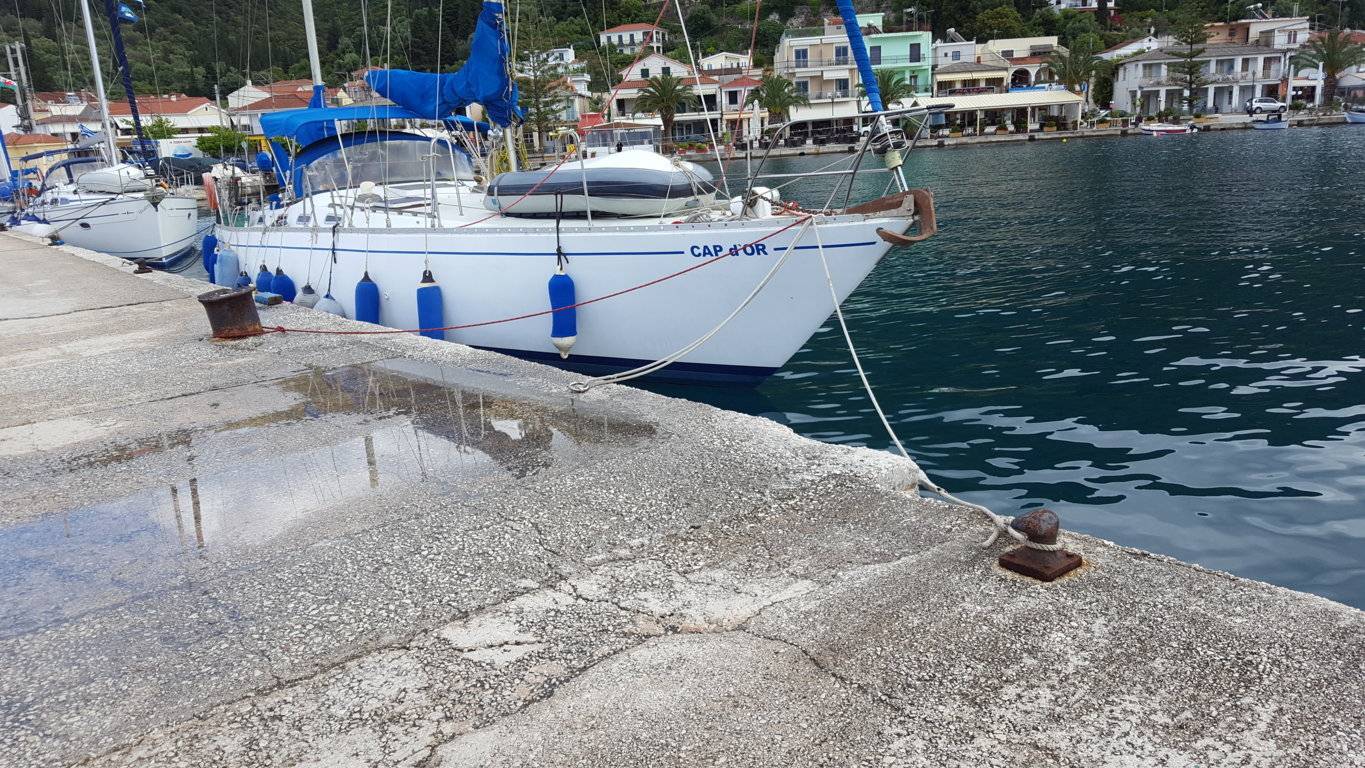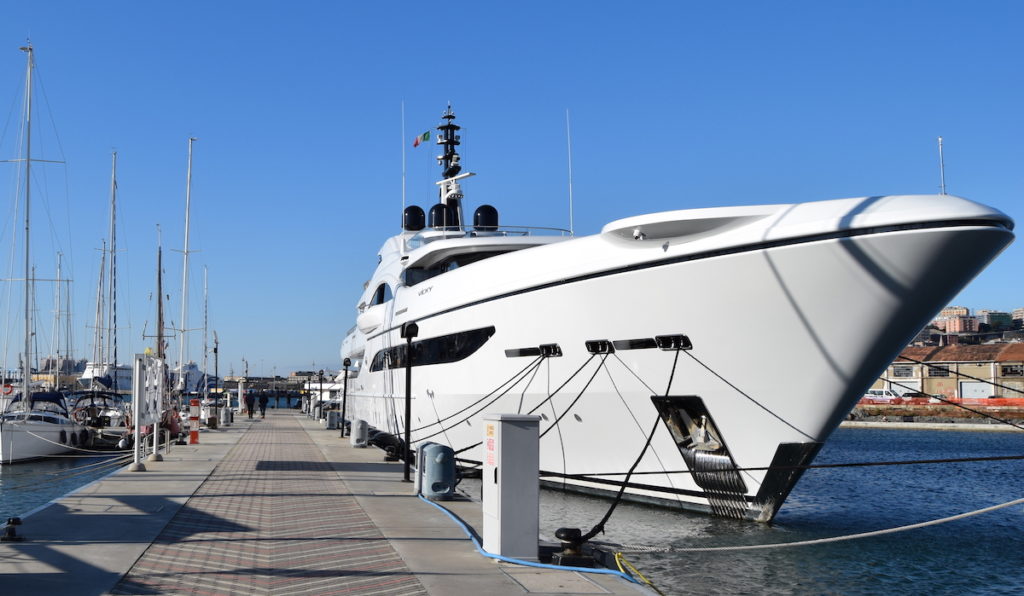After showing you the different types of berths available within the ports, it’s now time to explain the types of mooring that can be performed.
There are three classic alternatives: stern-to, bow-to, and alongside. Each of these has its pros and cons that every boat owner must consider when performing mooring, both in terms of convenience of access to the vessel and the challenges posed by maneuvering.
 Stern-to mooring is the most classic, often preferred by boat owners for the convenience of accessing the vessel directly from the stern. You approach the dock with the boat’s stern, from where you throw the lines ashore and secure them to the cleats. Immediately after, you retrieve the mooring lines that allow you to reach the bow lines to be secured to the bow cleats.
Stern-to mooring is the most classic, often preferred by boat owners for the convenience of accessing the vessel directly from the stern. You approach the dock with the boat’s stern, from where you throw the lines ashore and secure them to the cleats. Immediately after, you retrieve the mooring lines that allow you to reach the bow lines to be secured to the bow cleats.
It can be a tricky mooring at times, especially in case of lateral wind gusts; during reverse maneuvering, we could be pushed onto the leeward boat, without being able to sufficiently counter the thrust due to the inertial movement of the bow.
Because of this, it’s important to ensure you always have good maneuvering space, taking a good margin of space to windward, and if you have a sailboat, it’s important to check how deep the mooring lines of nearby boats go, to avoid hitting them with the rudders or keel during the maneuver.

The maneuver to perform this mooring is simpler, as it doesn’t require reversing before entering the berth. The vessel maintains constant speed so that the bow doesn’t become misaligned with the stern.
This mooring can also be preferred to maintain a good level of privacy in the cockpit and inside the vessel, as these areas, which are the most lived-in, won’t be visible to those passing by on the dock.
The problem with this mooring, however, comes from the difficulty of boarding and disembarking from the boat. You must do it directly from the bow, which is higher than the stern and often not equipped to accommodate the gangway.

The use of an abundant number of fenders is strongly recommended in any case, especially in the presence of strong surge and absence of mooring buoys.
It’s a practical mooring for embarking people and materials because the boat will remain very close to the dock. Entry and exit maneuvers are very easy when free at bow and stern from other vessels; otherwise, you must maneuver using the spring lines or bow thruster.


